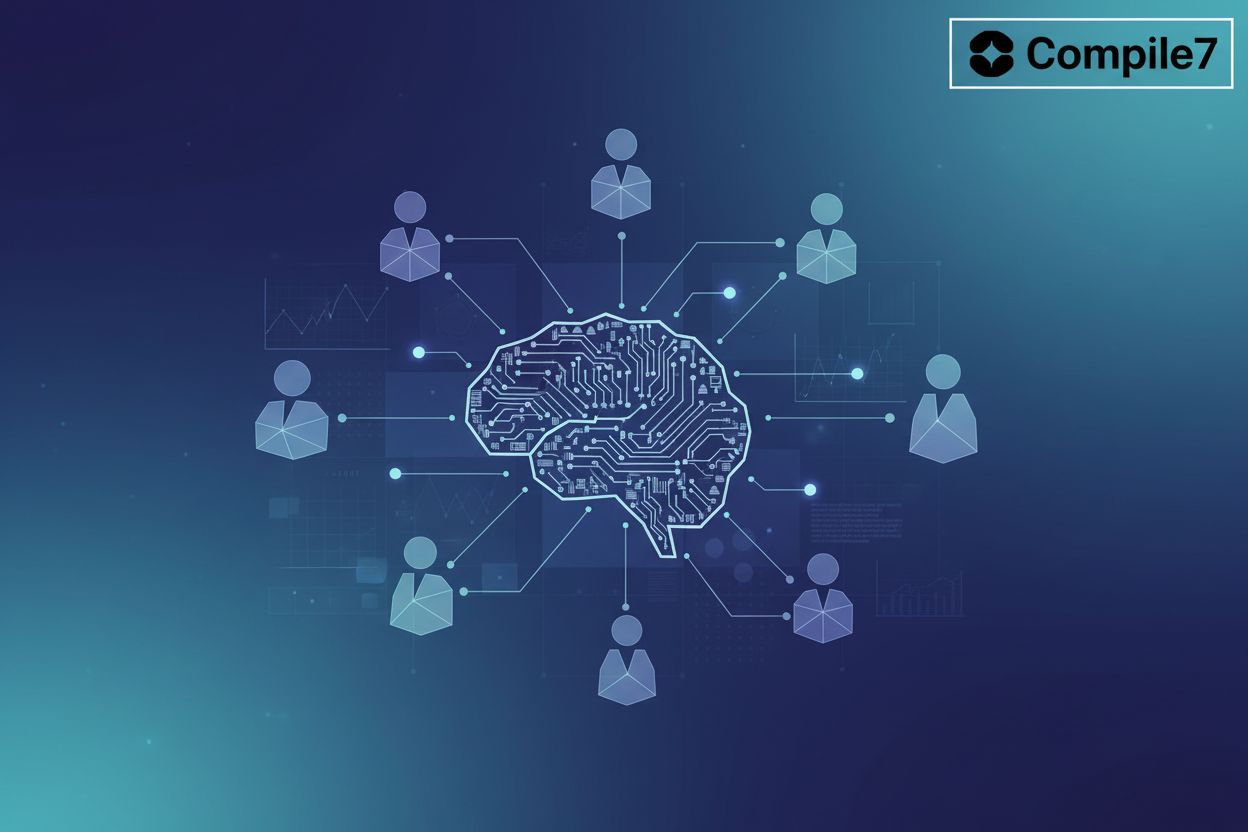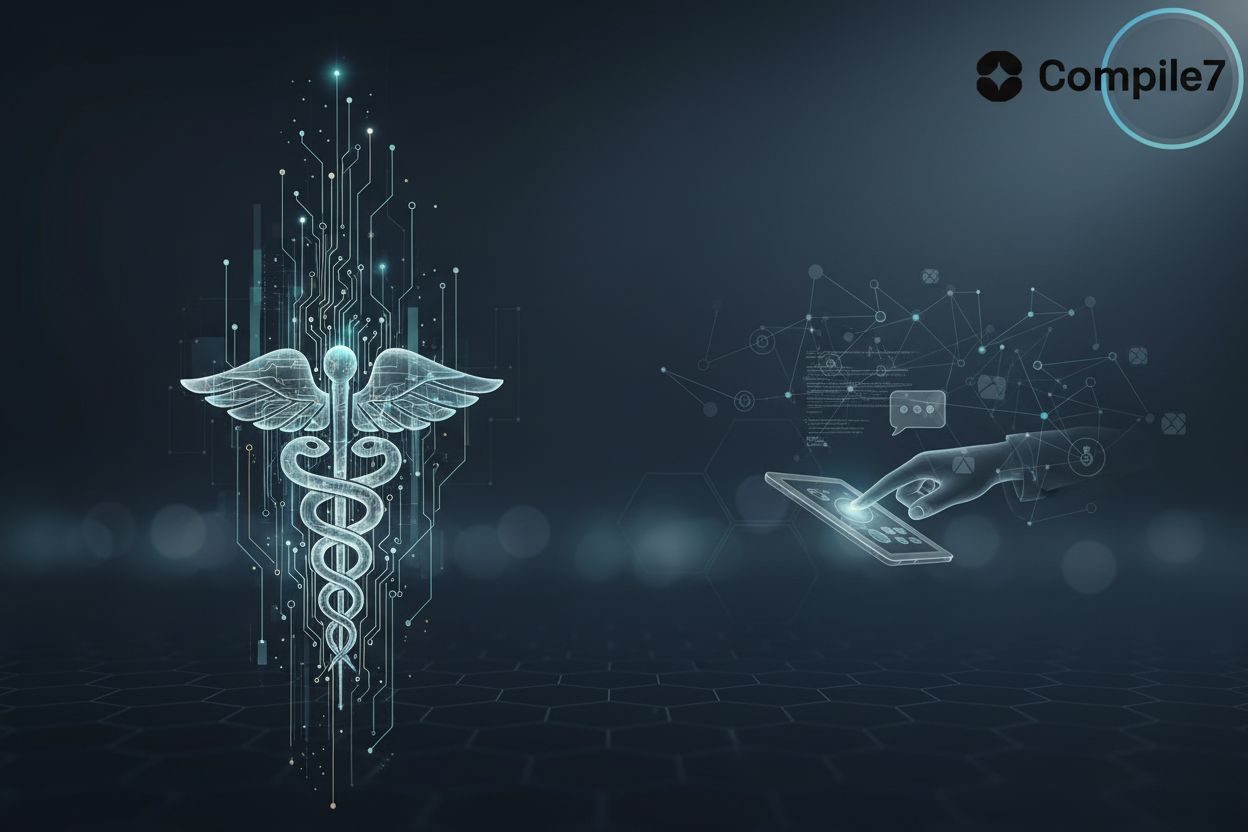Designing Effective Multi-Agent Systems for Business Automation
TL;DR
Understanding Multi-Agent Systems (MAS)
Multi-Agent Systems (MAS) mimic the collaborative nature of human teams, but how do these digital societies actually work? MAS involve multiple intelligent agents interacting to solve complex problems that a single agent can't handle alone. (What Are Multi-Agent Systems?)
A Multi-Agent System (MAS) is a system composed of multiple intelligent agents interacting within a shared environment. Agents, as defined by Astera, can be software programs, robots, or intelligent sensors. These agents possess three core characteristics:
- Autonomy: Each agent makes independent decisions based on its environment and objectives. They don't need constant human input to function.
- Interactivity: Agents communicate and exchange information to improve decision-making and optimize performance. Think of it like a team brainstorming session.
- Adaptability: The system responds dynamically to new inputs, adjusting actions in real-time to evolving conditions. It's not rigid; it can roll with the punches.
MAS offer a shift from centralized ai systems, where a single entity controls all operations, to distributed, collaborative approaches. (Multi-agent Systems and Coordination: Techniques for Effective ...)
Unlike single-agent systems that operate independently, MAS thrive on interaction and coordination. A single-agent system relies on predefined rules, whereas MAS agents share information and make collective decisions. The adaptability of MAS allows them to optimize processes in dynamic environments, a feat that single-agent systems struggle with.
Take, for example, traffic management, where single agent systems use fixed timers, whereas MAS can communicate and adjust based on real-time conditions.
Multi-agent systems can be classified into different types based on how agents interact, collaborate, and function. These types include:
- Cooperative MAS: Agents work together towards a common goal, often sharing resources and information. Think of a team of researchers collaborating on a project.
- Competitive MAS: Agents have conflicting goals and may compete for resources or to achieve their objectives first. This is like a game where players try to outmaneuver each other.
- Mixed MAS: These systems combine elements of both cooperative and competitive interactions, where agents might cooperate on some tasks and compete on others.
Understanding these interaction types helps in designing the appropriate architecture for your MAS.
Designing Effective MAS Architectures
Did you know that the architecture of your Multi-Agent System (MAS) can make or break its performance? Let's explore how different architectural patterns can optimize your business automation.
In centralized architectures, a single agent controls the entire system. This approach offers simplified management and coordination, but it can become a bottleneck. For example, in a customer service setting, a single agent might triage all incoming requests before distributing them to specialized agents. This is like having one manager for the whole department.
On the other hand, decentralized architectures distribute control among autonomous agents. This fosters greater flexibility and resilience, yet it can increase complexity. Imagine a supply chain where each agent (supplier, manufacturer, distributor) makes independent decisions based on local information. This is more like a network of independent contractors.
Hybrid approaches combine centralized and decentralized elements to leverage the strengths of both. The choice depends on complexity, scalability, and coordination needs.
Several common architectures offer different approaches to agent interaction, and they often relate to the broader centralized or decentralized concepts:
Single Agent Architecture: This involves one agent equipped with various tools, connected to a Large Language Model (LLM). This agent acts as the central intelligence, using its tools and the LLM's capabilities to perform tasks. It's a simplified MAS where the "system" is essentially one highly capable agent.
- Functionality: The agent receives a task, breaks it down, utilizes its tools (e.g., web search, code interpreter, file access) and queries the LLM for reasoning, planning, or content generation.
- Use Cases: Automating complex research, drafting documents, debugging code, or acting as a sophisticated personal assistant.
- Pros: Simple to set up and manage, good for tasks that don't require extensive inter-agent collaboration.
- Cons: Limited by the capabilities of the single agent and the LLM; can become a bottleneck for highly complex, distributed problems.
Supervisor Architecture: One agent (the supervisor) manages multiple sub-agents, delegating tasks as needed. This is a form of centralized control, where the supervisor acts as the main orchestrator.
- Functionality: The supervisor receives a high-level goal, breaks it into sub-tasks, and assigns them to appropriate sub-agents. It monitors their progress and collects results.
- Use Cases: Project management, workflow automation where distinct steps are handled by specialized agents, or coordinating a team of workers.
- Pros: Clear command structure, easier to monitor and control, good for sequential tasks.
- Cons: Supervisor can become a bottleneck, less resilient if the supervisor fails.
Hierarchical Architecture: Teams with specialized supervisors manage their own sub-agents. This is a layered approach, often seen as a more complex form of supervision, where multiple levels of command exist.
- Functionality: Agents are organized into teams, each with a supervisor. These supervisors might report to a higher-level supervisor, creating a tree-like structure. Specialization occurs at different levels.
- Use Cases: Large-scale operations like managing a complex manufacturing plant, coordinating a distributed sales force, or organizing a large customer support system.
- Pros: Scalable, allows for specialization and delegation at multiple levels, good for complex organizations.
- Cons: Can be rigid, communication can be slow through multiple layers, potential for information distortion.
Network Architecture: Agents communicate freely with each other, fostering collaboration. This is a highly decentralized model, often resembling a peer-to-peer network.
- Functionality: Agents can initiate communication with any other agent they know of, sharing information and coordinating actions organically. There's no central authority or strict hierarchy.
- Use Cases: Distributed sensor networks, collaborative problem-solving in research, or peer-to-peer marketplaces where agents discover and interact with each other.
- Pros: Highly resilient, flexible, good for emergent behavior and rapid adaptation.
- Cons: Can be difficult to control and predict, coordination can be challenging without explicit protocols, potential for chaos.
Custom Architecture: Agents communicate only with selected sub-agents, enabling tailored interactions. This is where you design specific communication pathways based on the task, deviating from strict hierarchies or fully open networks.
- Functionality: Instead of a free-for-all or a rigid hierarchy, agents are programmed to communicate only with specific other agents or groups of agents that are relevant to their current task or role. This allows for highly optimized and context-aware communication.
- Use Cases: A system where a marketing agent only talks to a sales agent and a content creation agent, but not directly to a customer support agent unless a specific escalation occurs. Or a manufacturing system where a quality control agent only communicates with the production agent it's monitoring.
- Pros: Highly efficient for specific workflows, reduces unnecessary communication, allows for fine-grained control over interactions.
- Cons: Can be complex to design and maintain if not well-defined, less flexible than a network architecture if new interactions are needed.
Which architecture you use depends on your specific goals and environment. Many factors influence these choices, including how complex the system is, how well it scales, and coordination needs.
Agent Coordination and Communication Strategies
Did you know that the right coordination strategy can significantly boost the efficiency of your Multi-Agent System (MAS)? Let's explore how agents can work together harmoniously to achieve business automation.
Effective communication is the backbone of any successful MAS. Agents need a common language to exchange information and coordinate actions.
- Standard Communication Languages: Defining standard communication languages like Knowledge Query and Manipulation Language (KQML) or Agent Communication Language (ACL) ensures interoperability. These languages provide a structured way for agents to understand each other, regardless of their internal design. KQML, for instance, defines message types like "request," "inform," and "query," along with parameters for content and sender/receiver. ACL is a more general framework for agent communication.
- Message Structure and Content: The structure and content of messages must be well-defined to avoid ambiguity. This includes specifying the type of information being exchanged (e.g., task requests, status updates) and the format in which it is presented.
- Asynchronous vs. Synchronous Communication: Asynchronous communication allows agents to send messages without waiting for an immediate response, increasing flexibility. Synchronous communication requires immediate acknowledgment, ensuring that information is received and processed in real-time.
Coordination mechanisms enable agents to align their actions and work towards common goals. Several strategies exist, each with its own strengths:
- Negotiation: Agents reach agreements through iterative proposals and counter-proposals. This is useful in scenarios where resources are limited and agents must compromise to achieve a mutually beneficial outcome.
- Auctioning: Agents bid for tasks or resources. This approach is well-suited for dynamic environments where tasks become available sporadically and agents compete to perform them.
- Voting: Agents express preferences to reach a collective decision. This is valuable for scenarios where multiple agents have a say in the outcome, such as selecting the best course of action in a complex project.
- Contract Nets: Agents advertise tasks, and other agents bid to perform them. This is effective for distributing tasks among agents with varying capabilities and expertise.
Consider a supply chain where multiple agents represent suppliers, manufacturers, and distributors. These agents negotiate prices, auction off transportation slots, and vote on optimal delivery schedules. The agents use contract nets to outsource specialized tasks, such as quality control, to third-party agents.
Imagine custom ai agents that automate tasks, enhance productivity, and transform how your business operates. Solutions range from Customer Service Agents to Data Analysis Agents, Content Creation Agents, Research Assistants, and Process Automation Agents. Streamline workflows, improve decision-making, and achieve operational efficiencies.
Choosing the right coordination and communication strategies is vital for designing effective MAS.
Implementing MAS for Business Automation
Are you ready to transform your business with Multi-Agent Systems (MAS)? Let's break down how to implement these systems for maximum impact.
First, look at your business processes and identify areas ripe for automation. Focus on tasks that demand distributed intelligence and coordination among multiple agents.
- Supply chain optimization benefits from MAS by coordinating suppliers, manufacturers, and distributors in real-time.
- Customer service can use MAS to handle inquiries, route requests, and provide personalized support.
- Data analysis becomes more efficient when multiple agents work in parallel to process and interpret large datasets.
Once you've pinpointed the use cases, it's time to develop and deploy your MAS.
- Adopt agile development approaches to iteratively build and refine your MAS.
- Choose programming languages and frameworks that support agent-based modeling and distributed systems.
- Implement rigorous testing and validation strategies to ensure your MAS functions correctly and reliably.
When deploying your MAS, carefully consider scalability, security, and integration with existing systems.
- Ensure your architecture can scale to handle increasing workloads and data volumes.
- Implement robust security measures to protect sensitive data and prevent unauthorized access.
- Integrate your MAS with existing systems to create seamless workflows and avoid data silos.
Consider a healthcare setting where multiple agents manage patient appointments, coordinate medical staff, and optimize resource allocation. Alternatively, in retail, MAS can personalize shopping experiences by analyzing customer data and recommending products in real-time.
Implementing MAS can be complex, but the potential benefits are immense. By carefully identifying use cases and following best practices, you can harness the power of distributed intelligence to transform your business.
Challenges and Considerations
Multi-Agent Systems (MAS) bring many benefits, but they also present unique challenges that businesses need to address when automating their processes. What are the key hurdles to overcome to ensure these systems operate effectively and securely?
One of the primary challenges is coordination complexity. Ensuring agents work together without conflicts requires careful planning.
- Effective coordination mechanisms are vital for aligning agent actions and preventing inefficiencies.
- Managing communication overhead is critical, as excessive communication can bog down the system.
Consider a logistics company using MAS to manage its fleet; coordinating delivery routes in real-time to avoid traffic congestion and optimize fuel consumption is a complex task. Implementing effective coordination mechanisms is key to ensuring smooth operations.
Security and trust are also major concerns. Protecting against malicious agents and data breaches is essential for maintaining system integrity.
- Establishing trust between agents is crucial for reliable collaboration.
- Ensuring data integrity and privacy is paramount to prevent misuse of sensitive information.
For example, in financial trading, MAS must guard against rogue agents that could manipulate markets or leak confidential data.
Another challenge is dealing with unexpected agent behaviors. These systems operate in dynamic environments, and agents may encounter unforeseen situations.
- Robust error handling and fail-safe mechanisms are needed to prevent system failures. This could involve agents having fallback routines or a central monitoring system that can intervene.
- Adaptive learning algorithms can help agents adjust to new situations, but they must be carefully monitored.
- Safety constraints prevent catastrophic system failures. These might include hardcoded limits on actions, resource usage caps, or emergency shutdown protocols.
Imagine an autonomous drone delivery service where unexpected weather conditions or equipment malfunctions can lead to unpredictable agent behavior.
Successfully addressing these challenges requires a holistic approach that considers coordination, security, and adaptability. By carefully designing and implementing MAS, businesses can harness the power of distributed intelligence while mitigating its inherent risks.
Real-World Applications and Case Studies
Multi-Agent Systems (MAS) are not just theoretical concepts; they're actively reshaping industries and solving real-world problems. Let's explore how these systems are being applied across various sectors.
MAS excel at managing the complexities of modern supply chains. By coordinating inventory, transportation, and logistics in real-time, these systems can significantly reduce costs and improve delivery times.
- Real-time Coordination: MAS can dynamically adjust routes and schedules based on real-time data, such as weather conditions and traffic congestion.
- Inventory Management: Agents representing different stages of the supply chain can communicate to optimize inventory levels and prevent shortages or overstocking.
- Transportation Efficiency: MAS can coordinate fleets of vehicles to minimize fuel consumption and delivery times.
AI-powered chatbots and virtual assistants are revolutionizing customer service. MAS can personalize customer interactions and provide seamless support across multiple channels.
- Personalized Recommendations: Agents can analyze customer data to provide tailored product recommendations and support.
- Efficient Routing: MAS can route customer inquiries to the most appropriate agent or department, reducing wait times and improving customer satisfaction.
- 24/7 Availability: AI-powered agents can provide round-the-clock support, ensuring that customers always have access to assistance.
MAS play a vital role in balancing energy loads and integrating renewable energy sources into smart grids. Intelligent agents can enhance power distribution and grid reliability by balancing energy loads, integrating renewables, and detecting faults.
- Load Balancing: Agents can dynamically adjust energy distribution based on real-time demand, preventing blackouts and optimizing resource utilization.
- Renewable Energy Integration: MAS can coordinate the integration of intermittent renewable energy sources, such as solar and wind, into the grid.
- Fault Detection: Intelligent agents can monitor the grid for anomalies and quickly identify and isolate faults, minimizing downtime.
As AI continues to evolve, expect even more innovative applications of MAS across diverse industries.
The Future of Multi-Agent Systems
Multi-Agent Systems (MAS) are rapidly evolving, promising a future where collaborative ai transforms how businesses operate. What emerging trends and ethical considerations will shape this exciting landscape?
Integration with large language models (LLMs) is set to revolutionize MAS. LLMs enhance agent decision-making, enabling more sophisticated interactions and coordination. Expect to see more MAS leveraging LLMs for natural language understanding and complex reasoning.
Advancements in multi-agent reinforcement learning are creating more adaptive and intelligent systems. These systems learn from experience, refining strategies and enhancing problem-solving over time. This is particularly useful in dynamic environments where continuous adaptation is crucial.
The role of blockchain in securing MAS is gaining traction, enhancing trust and security. Blockchain technology enables secure communication and data sharing among agents, mitigating risks associated with malicious actors. This is especially important in sensitive applications like financial trading and supply chain management by providing an immutable ledger of transactions and communications.
Edge computing for real-time intelligence in MAS brings processing closer to the data source, reducing latency and improving responsiveness. This is critical for applications like autonomous vehicles and smart grids where real-time decision-making is essential, as it allows agents to act on data immediately without relying on distant cloud servers.
Addressing privacy concerns and data security is paramount. As MAS collect and process vast amounts of data, protecting sensitive information becomes critical. Implementing robust security measures and adhering to data protection regulations is essential. Potential approaches include anonymization techniques, differential privacy, and secure multi-party computation.
Ensuring fairness and transparency in MAS decision-making is crucial for building trust. Algorithmic bias can lead to discriminatory outcomes, so developers must design systems that are equitable and transparent. This includes carefully selecting training data, implementing bias detection and mitigation strategies, and utilizing explainable ai techniques.
The impact of MAS on employment and the workforce requires careful consideration. As MAS automate tasks previously performed by humans, there is a risk of job displacement. Proactive measures such as retraining programs, investing in new industries, and fostering human-ai collaboration are needed to mitigate these negative impacts.
Multi-Agent Systems hold immense potential, and addressing these ethical considerations will be key to unlocking a future where collaborative ai benefits everyone.









